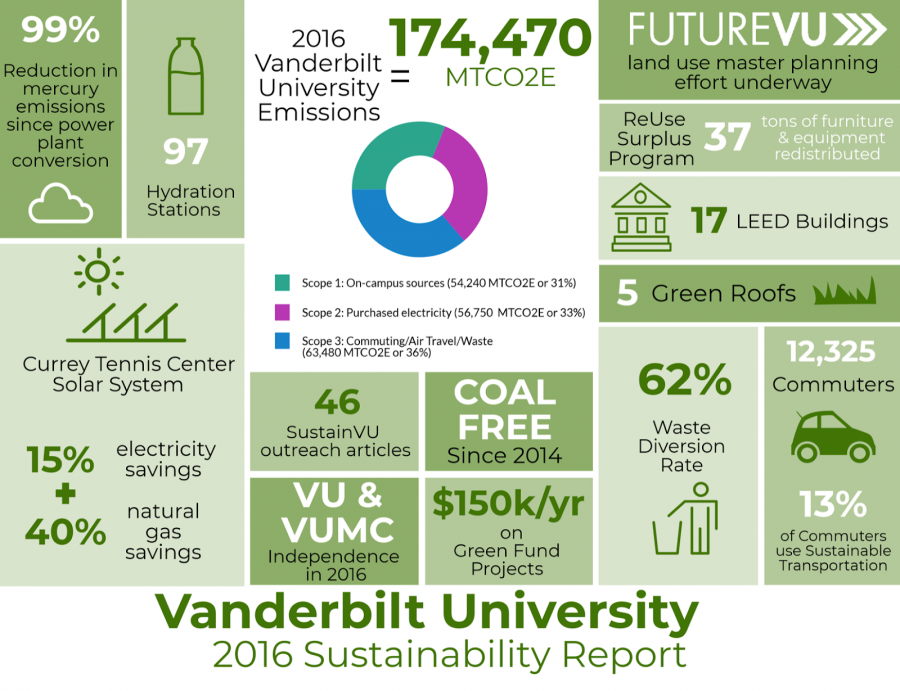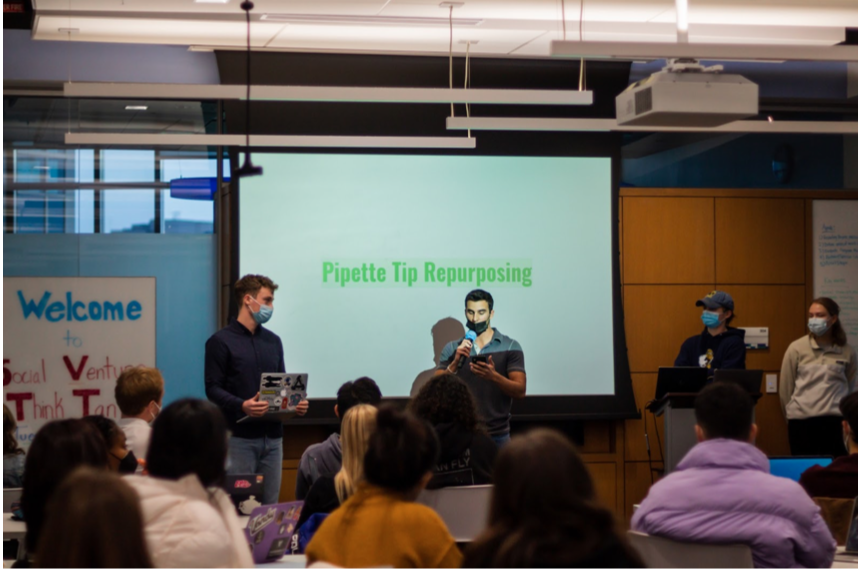A redesigned sustainability report evaluates Vanderbilt’s environmental impact during the calendar year of 2016 under new criteria. In the past, the annual report, developed by the Sustainability and Environmental Management Office (SEMO), focused primarily on greenhouse gas emissions and included the Vanderbilt Medical Center in its data. It now examines only the university campus and integrates water use, food waste, recent environmental initiatives and student-inspired Green Fund projects into its evaluation.
The report presents Vanderbilt’s 2016 energy emissions in three categories: 31 percent coming from on-campus sources, 33 percent from purchased electricity and 36 percent from a combination of factors like commuting, air travel and waste. Vanderbilt hosted 17 LEED certified buildings, 97 hydration stations and spent $150,000 on Green Fund projects.
“As a university, there’s always so many different ways in which energy is being used,” Daniel Shaykevich, Vanderbilt senior and president of Students Promoting Environmental Awareness and Responsibility (SPEAR), said. “We have to consider a lot of ways in which we’re contributing to environmental issues while also as an institution of higher education working to solve them.”
Students can be involved in university decisions concerning sustainability through programs like the Green Fund and student organizations which collaborate with university administration.
“[SPEAR] meets with SEMO regularly, on a monthly basis, and we try to make sure that the student voice is represented and… that we’re working in line with what the administration is hoping for,” Shaykevich said.
Since reports from previous years include both the university and the medical center, this year’s cannot be directly compared to those in the past, but can serve as a point of comparison for reports in the future.
“It’s become more of an exciting report to see what steps the university has taken,” Shaykevich said. “Sustainability has started to play a larger role in the past few years, especially with the land use plan and FutureVU.”
Vanderbilt’s long-term development plan, FutureVU, details recommendations on environmental issues ranging from water management to transportation in efforts to maintain sustainable values as the campus grows. The new sustainability report includes information on two studies launched in 2017 which explore renewable energy and the energy efficiency of potential building sites.
“It’s a good tool that people can look at… and realize what sort of sustainability initiatives are going on around campus that maybe they hadn’t considered or noticed before,” Shaykevich said.




